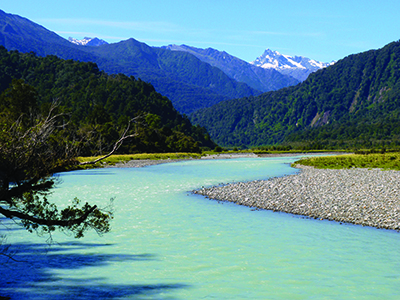Working together to address water management challenges
 There’s a lot of talk about collaboration – it’s a bit of a buzz word. Put simply, it’s about people working together to achieve the same goal.
There’s a lot of talk about collaboration – it’s a bit of a buzz word. Put simply, it’s about people working together to achieve the same goal.
We see many examples of local authorities working with others in the sector, with central government, with the private sector, and with their communities. This is expressed in governance arrangements, shared services delivery models, strategic planning, and consistent approaches from regulation right down to project delivery.
The reasons for working together are many and various – for example, to improve the services delivered to communities, to foster economic development, to better align land use and infrastructure delivery, and to address freshwater quality challenges, just to name a few.
I recently attended the Water New Zealand Conference & Expo. One of my take-home messages from the conference was that the really difficult challenges facing the public sector – like how we improve the quality of our water resources – are primarily relationship challenges rather than technical ones.
Project delivery: Improving the resilience of Wellington’s drinking water supply
Wellington Water is responsible for making sure that the water supplied to Lower Hutt, Porirua, Upper Hutt, and Wellington is clean and safe to drink. The Wellington region is vulnerable to the risk of its drinking water supply being interrupted for a prolonged period after a major shock, such as a significant earthquake. The damage to the water network from such an event could leave parts of Wellington without water for up to 100 days.
Wellington Water’s long-term goal is to be able to provide 80% of its customers with at least 80% of their drinking water needs within 30 days of a reasonable size earthquake.
Wellington Water has been working with central government, infrastructure providers (for example, roading and electricity), and critical users, such as Wellington Hospital, to come up with a plan and the funding to improve the overall resilience of Wellington. The parties are working together to take an integrated approach, including how it engages with central government about its contribution to building regional resilience.
Central government recently announced a $6 million contribution to this resilience goal that will be used to encourage people to store 20 litres of water per person per day to last at least the first seven days after a major earthquake. To support this work, Wellington Water is drilling for additional bores and storing bladders in a number of locations in the Wellington region.
Shared services: A council-controlled organisation in the Waikato?
Local authorities are required to deliver services in the most efficient and cost-effective way. Hamilton City Council and Waipa District Council have recognised that this has become more difficult for the delivery of water, wastewater, and stormwater services to their communities for a number of reasons, including growth pressures and increasing environmental standards.
A shared services model for the delivery of water supply, wastewater, and stormwater services in the Waikato has been considered since 2012. The process has been a long one starting with a report commissioned by Waikato Local Authority Shared Services Limited on behalf of the Waikato Mayoral Forum. Drivers for the shared services model included achieving cost savings, building network resilience, better service delivery to communities, and building technical capability.
Hamilton City Council and Waipa District Council are jointly consulting with their communities on forming a Shared Waters Management Company in the lead-up to their 2018-28 long-term plans. The consultation document states that the main purpose of the company would be to deliver more cost-effective services, more expertise, and a stronger and more resilient waters network than Hamilton City and Waipa District Councils could deliver on their own.
At this stage Waikato District Council have decided not to pursue this option.
Co-governance: The Rotorua Lakes, Waikato River, and Te Waihora
In our 2016 report Principles for effectively co-governing natural resources, we looked at a selection of co-governance arrangements established to manage a natural resource, including the Rotorua Lakes, the Waikato River, and Te Waihora (Lake Ellesmere).
We identified some principles that are helpful in setting up and operating co-governance arrangements:
- build and maintain a shared understanding of what everyone is trying to achieve;
- build the structures, processes, and understanding about how people will work together;
- involve people who have the right experience and capacity;
- be accountable and transparent about performance, achievements, and challenges; and
- plan for financial sustainability and adapt as circumstances change.
Our water work programme
We’re looking at water management challenges through our water theme work programme that covers drinking water, freshwater, stormwater, and the marine environment.
We’ve just published a scene-setting report that explains why we have an interest in water management, sets out our view of the key water management challenges facing the public sector, and highlights the themes we’ll explore through our water work.
Effective relationships are crucial to addressing water management challenges. We’re going to look at how public sector organisations are working with each other, Māori, and their communities more generally in carrying out their water management responsibilities. We’re interested in how they set strategic priorities, make investment decisions, deliver programmes of work, their governance arrangements, and what regulatory and non-regulatory approaches they are using.
We look forward to engaging with many of you as we progress our water work. If you have any stories about collaboration you’d like to share with us, please post a comment below or contact the Local Government team at the Office.
